 ARMORED SAINT – Symbol of Salvation (1991 Metal Blade)
ARMORED SAINT – Symbol of Salvation (1991 Metal Blade)
In 1991, an hour-long album was becoming standard. In Armored Saint’s case, it’s all killer no filler.
It wasn’t an easy time for the metal pioneers. Founding guitarist and songwriter Dave Prichard died of leukemia far too young. He left behind a handful of songs on a 4-track demo. All but seamlessly, Jeff Duncan of Odin filled his spot, while original guitarist (and brother of drummer Gonzo) Phil Sandoval returned to the band. With lead vocalist John Bush, and bassist Joey Vera, this lineup is still current today…although the band obviously broke up when John joined Anthrax for Sound of White Noise!
Although Symbol of Salvation was a triumph and a fine tribute to Prichard, the band did split afterwards. It was 1991, and there was little future for a band like Armored Saint. Fortunately they made this one count.
Symbol of Salvation is unrepentantly heavy. Opener (and lead single) “Reign of Fire” is notable for a number for things. 1) Its incredible heavy chug (written by Prichard). 2) John Bush’s voice, straining at the leash every time he screams. 3) Incredibly crisp and heavy production by Dave Jerden. 4) The very evil looking music video. 5) An awesome chorus! The album would be worth buying for this one song, but fortunately the other 12 are also great.
No less massive, “Dropping Like Flies” is melodic viciousness. Without the speed of “Reign of Fire”, it still retains that screamin’ heaviness. Another highlight is the more mainstream “Last Train Home”, an emotional and strong track that acted as second single. The indelible chorus is impossible to forget. This leads into the heavy “Tribal Dance”, spotlighting the percussion of Gonzo. Joey Vera’s bass work is also impressive here (as it always is). This is jungle metal, perhaps, a stomping romp through the bush with blades unsheathed.
One of the more divisive songs might have been “The Truth Always Hurts”. To these ears, the riff (P. Sandoval/J. Duncan) sounds like sleaze metal from two years prior. You could imagine Poison writing a song around it, though obviously not as heavy! Make no mistake, “The Truth Always Hurts” is heavy, but there are elements here that could work in other genres if stripped of the crunch.
Backwards guitar introduces “Half Drawn Bridge”, an ominous and progressive instrumental which introduces the ballad “Another Day”. It is unfortunate that this song never had a chance like Metallica ballads soon would. It is reminiscent of some of the ballads that Testament were known to do. In case you were worried, it picks up when it’s time for the solos!
The title track “Symbol of Salvation” is a riff monster. Perhaps Hetfield wishes he wrote a reptillian riff as lethal as this one. Brilliant heavy track; Bush at peak scream. Then, there’s a chugging guitar like “Street Justice” by Twisted Sister, which soon breaks loose into the main riff of “Hanging Judge”. Another riff, another chorus, another metal should-be classic. That is nothing compared to “Warzone”, like Iron Maiden on anabolic steroids. That is to say, it has the delicacy of some of Maiden’s work, but with the beefy pummelling of a boxing glove. “Warzone” could be the highlight deep cut – what soloing too!
There is still plenty of metal to go. In an earlier age, Symbol of Salvation would have been a double album (or at least a 3-sider!) but its length is not a weakness. “Burning Question” brings back the speed. It leaps and bounds, once again with brilliant solo work by Duncan/Sandoval. Yet it’s the riff you’ll keep coming back to (if not the chorus).
Perhaps the most impressive song from a technical point of view is “Tainted Past”, the only song with a Dave Prichard guitar solo. They painstakingly pulled his haunting and emotional solo from a demo cassette, and seamlessly used it in this track that Joey Vera wrote. It’s jazzy and progressive to start, before Gonzo’s rock beats begin. It’s definitely unusual and unlike any other song on the album. You could say it’s album epic, which suits, since it’s over seven minutes long.
An album like this deserves a memorable closer. That would be “Spineless”, a thrashing good time, and probably the fastest song on the album. Bookending the album with the fastest tunes, “Reign of Fire” and “Spineless”, was a cool move. It’s a neckbreaker for sure. “Spineless! That’s what you are!”
Every metal fan owes it to themselves to check this album out at least once. Do it.
4.5/5 stars
Don’t forget to check out John Clauser’s excellent album battle episode – Symbol of Salvation vs. Sound of White Noise!









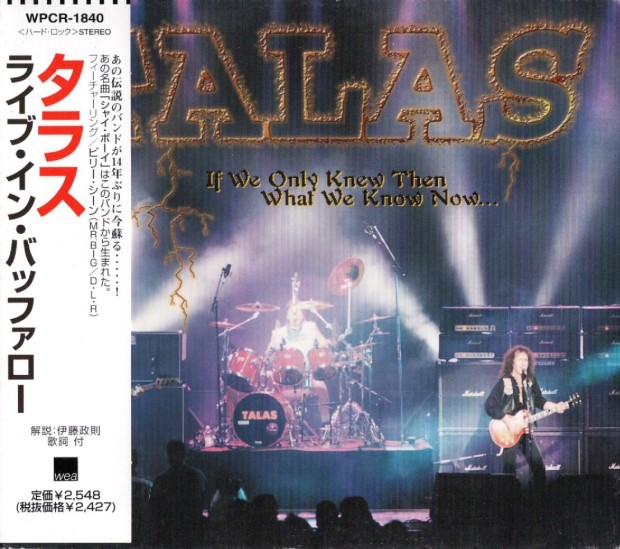
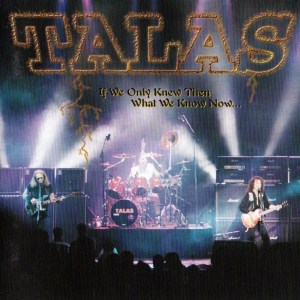
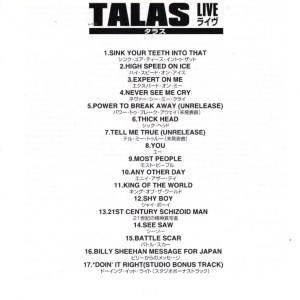




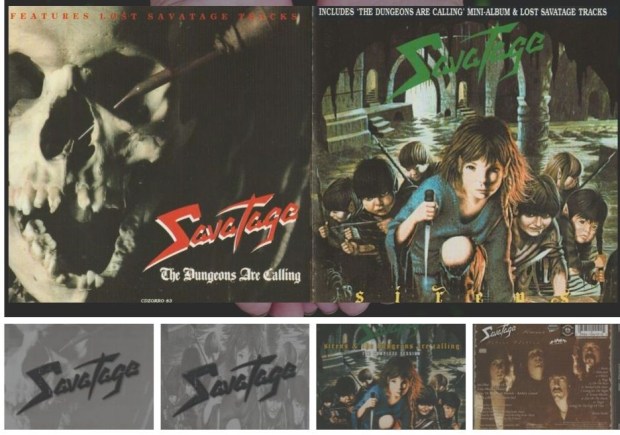

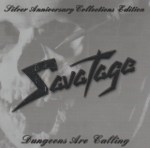
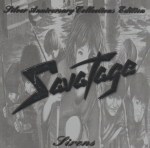
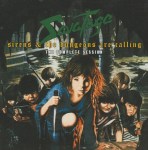






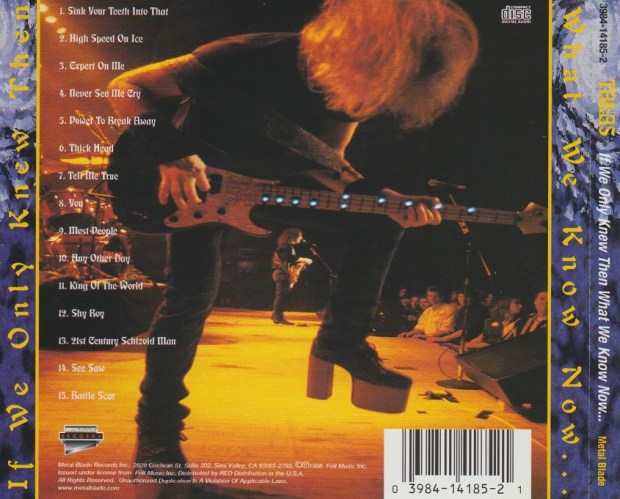
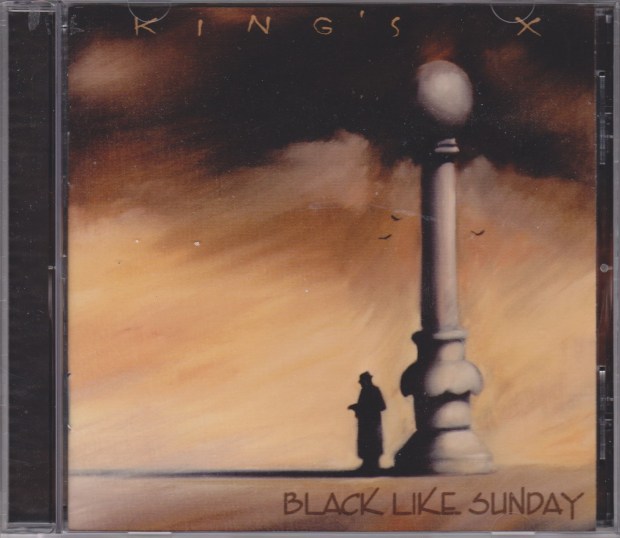



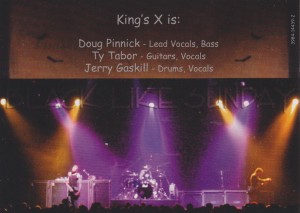



 KING’S X – Manic Moonlight (2001 Metal Blade)
KING’S X – Manic Moonlight (2001 Metal Blade)


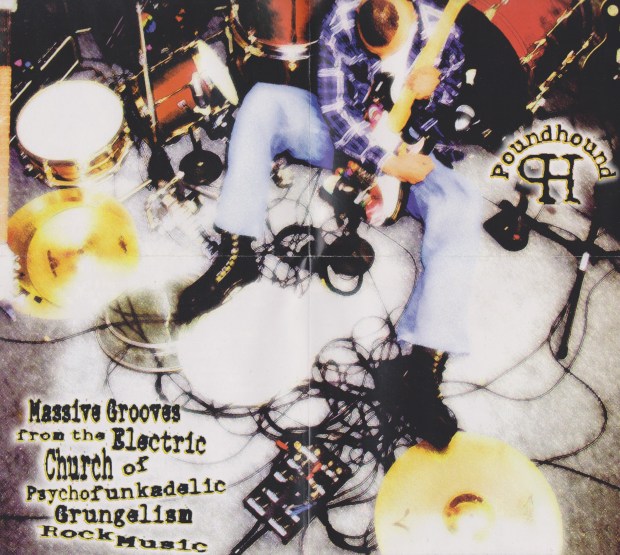
 POUNDHOUND – Massive Grooves from the Electric Church of Psychofunkadelic Grungelism Rock Music (1998 Metal Blade)
POUNDHOUND – Massive Grooves from the Electric Church of Psychofunkadelic Grungelism Rock Music (1998 Metal Blade)

